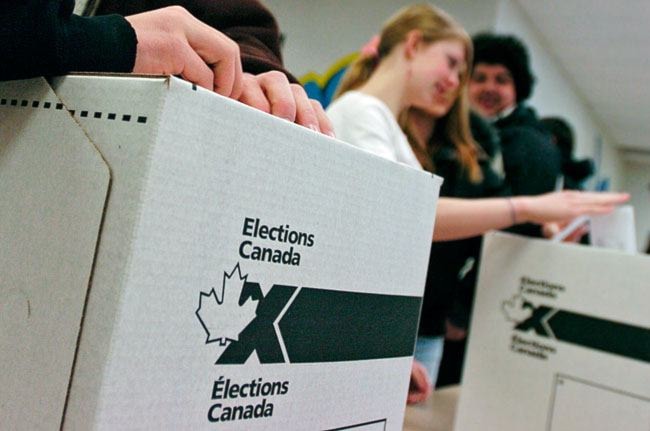Given the amount of recent letters devoted to promoting alternate voting regimes in the Yukon, I thought it was time for someone to weigh in in support of our current first-past-the-post electoral system.
As it stands, the party with the most votes wins the riding, even if the amount of votes received is less than 50 per cent. The common complaint about first-past-the-post is that an individual can win a riding, or a party can win an election, with only 35 per cent of the popular vote, as all that matters is getting more than the second place person.
This can, and usually does, result in a legislature that is not necessarily reflective of the popular vote received by the three major parties.
Rather than see this result as a weakness, I see it as a strength, in that less than 50 per cent of the votes can still result in the election of a strong, unified management team. While a majority does vest a considerable amount of power in the winning party, it also ensures a stable political environment with a management team empowered to make decisions without having to constantly negotiate its positions.
Conversely, alternate voting systems, such as proportional representation and single transferable vote have a tendency to result in minority governments and a fracturing of the legislature. What we make up for in a representative legislature we lose in cohesive and lasting management.
Under proportional representation, or PR, the last election would have seen parties receive a number of seats in proportion to the percentage of votes received. The result would have been a minority Yukon Party government, with the Yukon Party receiving eight seats, the NDP six and the Liberals five.
Similarly, a single transferable vote, or STV, in which a voter marks a ballot for first, second and third choice with the third place party’s votes divvied between the two remaining parties, would most likely have resulted in a similar Yukon Party minority government. Without going in-depth into the math, if we assume that all last place NDP and Yukon Party votes went to the Liberals and that all last place Liberal votes broke 60/40 in favour of the NDP, we get a legislature that looks a lot like the PR system above, with a couple real squeakers for the Yukon Party.
In either case the result is a minority government, which means that parties must work together in order to pass legislation and generally govern. While on the surface this would seem to be a liveable result, the practical reality is an electoral system fraught with horse-trading between parties and early elections.
The second and third party need only wait for a wedge issue to arise and, if the prevailing wind is in their favour, decry the current government and force an election. In a system with three major parties a PR or STV system is a recipe for fragile coalitions and games of brinkmanship (i.e. the current political situation plaguing Ontario’s minority Liberal government).
The strength of the first-past-the-post system is that it lends itself to “big tent” politics in that different segments of society are forced together to determine cohesive platforms in order to obtain the threshold of votes required to win an election. The very survival of parties requires that unrepresented portions of society be approached by the major parties in an attempt to form a big enough coalition of voters to elect a government. These compromises of factions within a party are given pay through a party’s platform, and then presented to an electorate during the election. Upon election the majority government is guided by the platform, meaning, in short, that the electorate know what they are getting.
With a minority government there is no one guiding document, as any coalition parties must horse-trade after the election to determine what priorities move forward. The way forward is less clear, as the horse-trading happens after the election, rather than solely within policy conventions before the election. The result is a more bland electoral style, with legislatures less likely to implement progressive or experimental legislation.
Further, it is important to note that there is no barrier to any party gaining ascendancy in the Yukon. In the past 20 years each of the three major parties have formed majority governments. The first-past-the-post system offers no systemic advantage to one party over another (though the Yukon Party has been on a winning streak of late). Upon defeat the second or third party’s ideas do not somehow disappear, they can be repackaged in the next election and, as the wheel eventually turns, those lasting ideas will eventually have their time in the sun.
At the end of the day it is really a choice between strong centralized management or a more diverse, but perhaps less stable, government. There is no right or wrong answer to the question, nor is one option more fair than the other, it is really just an issue of picking a management result that works best for the Yukon.
It is my opinion that our current first-past-the-post system does the job, in that it produces a strong central management team (regardless of which party wins) and keeps us away from the polls until terms expire, meaning Yukon isn’t in a constant state of election. In short, the current system isn’t broken, so no need to fix it.
Graham Lang is a Whitehorse lawyer and long-time Yukoner.
